
A cock ring is a ring worn around the penis, usually at the base. The primary purpose of wearing a cock ring is to restrict the flow of blood from the erect penis to produce a stronger erection or to maintain an erection for a longer period of time. They are sometimes used as medical devices, on their own or in conjunction with a penis pump to assist in the management of erectile dysfunction. Genital adornment is another purpose, as is repositioning the genitals to provide an enhanced appearance.
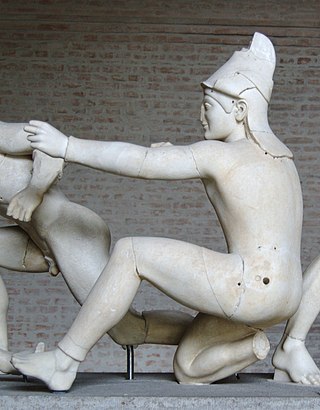
Marble has been the preferred material for stone monumental sculpture since ancient times, with several advantages over its more common geological "parent" limestone, in particular the ability to absorb light a small distance into the surface before refracting it in subsurface scattering. This gives an attractive soft appearance which is especially good for representing human skin, and which can also be polished.

The modern combine harvester, also called a combine, is a machine designed to harvest a variety of cultivated seeds. Combine harvesters are one of the most economically important labour-saving inventions, significantly reducing the fraction of the population engaged in agriculture. Among the crops harvested with a combine are wheat, rice, oats, rye, barley, corn (maize), sorghum, millet, soybeans, flax (linseed), sunflowers and rapeseed (canola). The separated straw is then either chopped onto the field and ploughed back in, or laid out in rows, ready to be baled and used for bedding and cattle feed.
A pessary is a prosthetic device inserted into the vagina for structural and pharmaceutical purposes. It is most commonly used to treat stress urinary incontinence to stop urinary leakage and to treat pelvic organ prolapse to maintain the location of organs in the pelvic region. It can also be used to administer medications locally in the vagina or as a method of contraception.
Lithotripsy is a procedure involving the physical destruction of hardened masses like kidney stones, bezoars or gallstones, which may be done non-invasively. The term is derived from the Greek words meaning "breaking stones".

Durrington or High Salvington Windmill is a Grade II listed post mill in High Salvington, Sussex that has been restored and is in full working order. The mill stands 320 feet (98 m) above sea level and is able to take advantage of incoming sea winds.

Archaeologists define a chopper as a pebble tool with an irregular cutting edge formed through the removal of flakes from one side of a stone.

A Kangaroo was a Canadian armoured personnel carrier (APC) during the Second World War which was created by converting a tank chassis. Kangaroos were created as an expedient measure "in the field" by the Canadian Army, and were so successful that they were used by other Commonwealth forces, including the British Army.
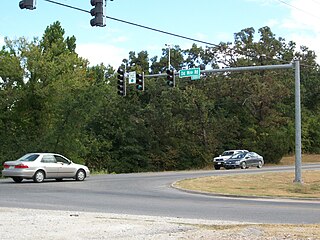
The Old Wire Road is a historic road in Missouri and Arkansas. Several local roads are still known by this name. It followed an old Native American route, the Great Osage Trail across the Ozarks and became a road along a telegraph line from St. Louis, Missouri, to Fort Smith, Arkansas. This route was also used by the Butterfield Overland Mail. It was known simply as the "Wire Road" while the telegraph line was up, but when the line was later removed, it became known as the "Old Wire Road". In St. Louis, where the road begins at Jefferson Barracks, it is called Telegraph Road. From St. Louis to Springfield, Missouri, it became designated Route 14 which, in turn, later became U.S. Route 66 and still later Interstate 44.
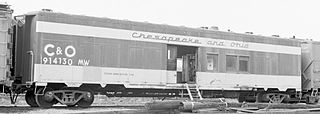
A steam generator is a type of boiler used to produce steam for climate control and potable water heating in railroad passenger cars. The output of a railroad steam generator is low-pressure, saturated steam that is passed through a system of pipes and conduits throughout the length of the train.

Black Mountain is a large hill which overlooks the city of Belfast, Northern Ireland. With a height of 1,275 ft, it towers over most of west Belfast and is part of the Belfast Hills. Its name is probably derived from the adjoining mountain called Divis, and they may have been seen as one mountain in the past. Black Mountain transmitting station is on the summit.

A rice mill is a food-processing facility where paddy is processed by cleaning the grain, removing the hull, sorting, and packing the rice, leaving it in its final form for sale to consumers.

Sugarloaf Mountain or Mount Sugarloaf, is a butte-like mountain located in South Deerfield, Massachusetts, United States, with two summits, North Sugarloaf Mountain 791 ft (241 m) and its more popular knee, South Sugarloaf Mountain 652 ft (199 m). Its cliffs, made of arkose sandstone, are a very prominent landscape feature visible for miles. Despite low elevations relative to the Berkshire Mountains to the west, dramatic cliff faces and a rise of 500 feet (150 m) to 600 feet (180 m) from the nearby Connecticut River make the mountain a popular tourist and hiking destination. Sugarloaf Mountain is the southern terminus of the Pocumtuck Range.
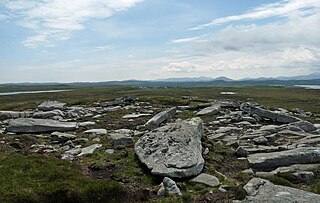
Callanish X is the collapsed remains of a stone circle. It one of many megalithic structures around the more well-known and larger Calanais I on the west coast of the isle of Lewis, in the Western Isles of the Outer Hebrides, Scotland.

Thelnetham Windmill, also known as Button's Mill is a Grade II* listed tower mill constructed of brick. The windmill is located at Thelnetham, Suffolk, England. It was built in the early nineteenth century to grind wheat into flour. Thelnetham windmill worked by wind power until 1924, latterly on two sails, after which it became derelict.

Meteorite hunting is the search for meteorites. A person engaged in the search for meteorites is known as a meteorite hunter. Meteorite hunters may be amateurs who search on the weekends and after work, or professionals who recover meteorites for a living. Both frequently use tools such as metal detectors or magnets to discover the meteorites.
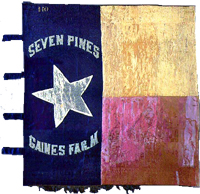
The 1st Texas Infantry Regiment, nicknamed the "Ragged Old First," was an infantry regiment raised in Texas for service in the Confederate States Army during the American Civil War. It fought mostly with the Army of Northern Virginia.

The Bryn Gwyn Stones or Bryn Gwyn Standing Stones are neolithic stones in Brynsiencyn on Anglesey.

Orfordness Lighthouse was a lighthouse on Orford Ness, in Suffolk, England. The 30 metres (98 ft) tower was completed in 1792. Work began on demolition in July 2020, and was completed in August. The light had a range of 25 nautical miles. It was equipped with an AIS transmitter with MMSI 992351016.

















